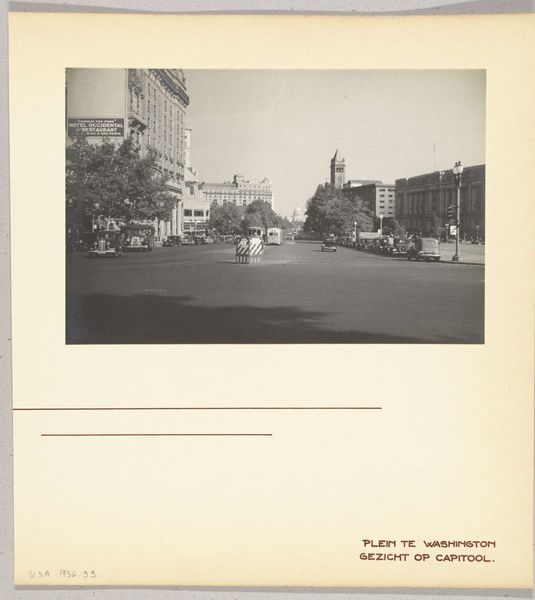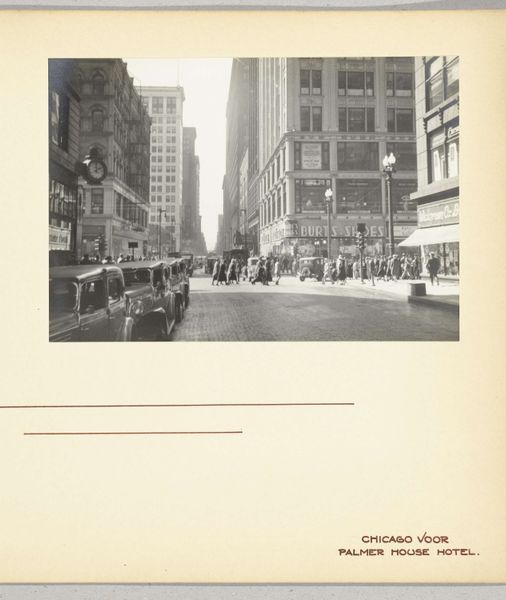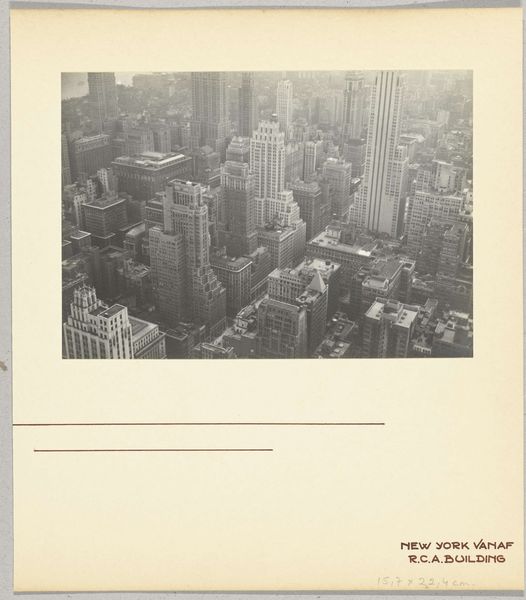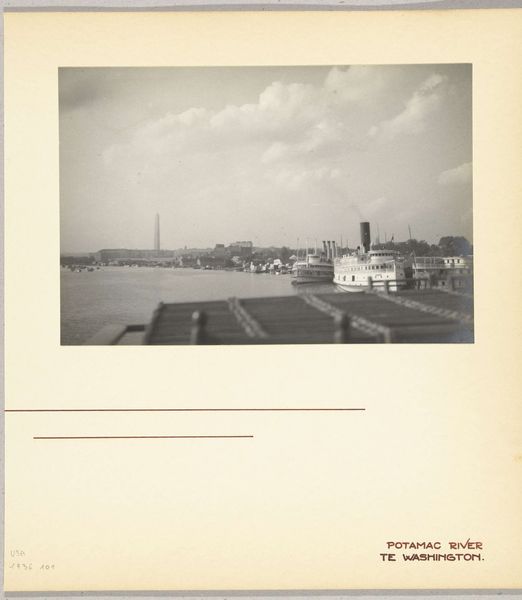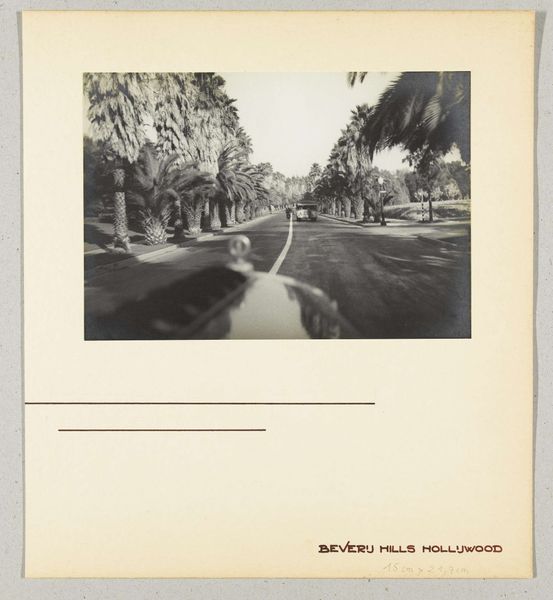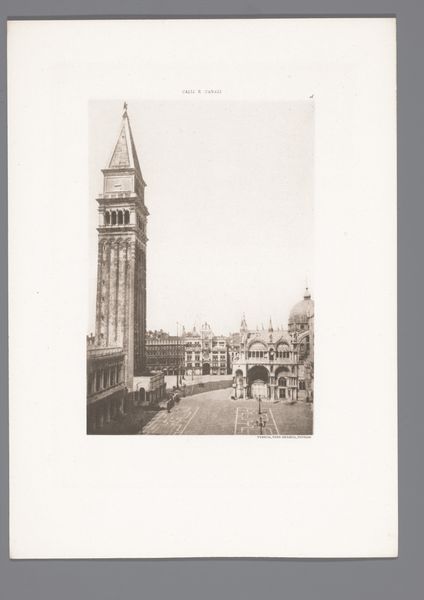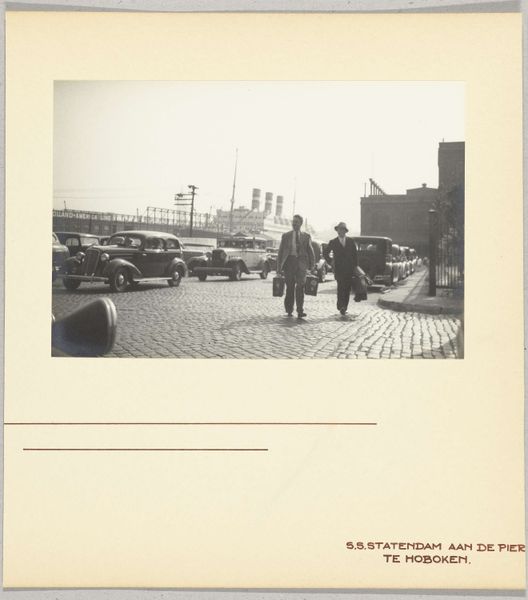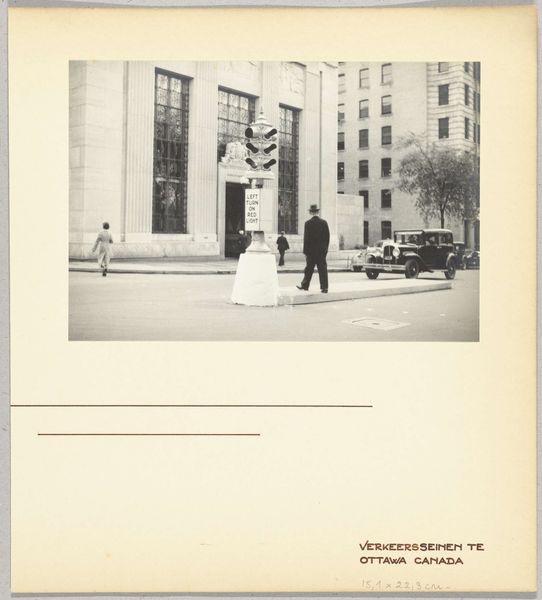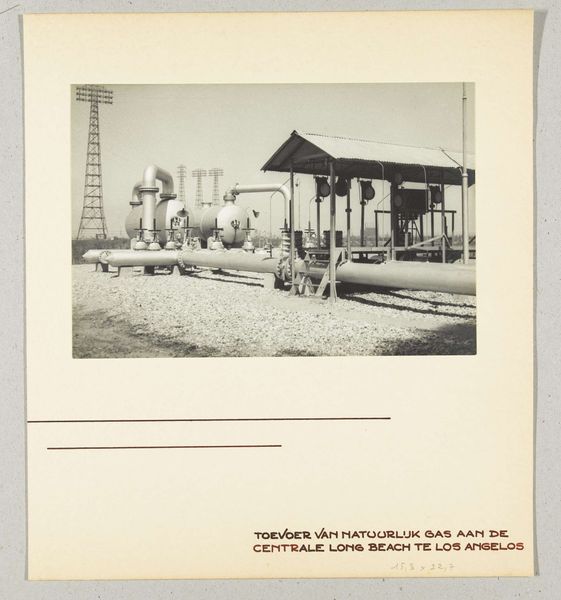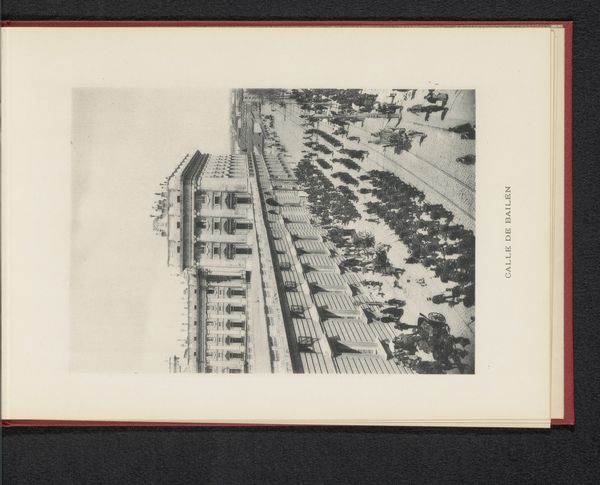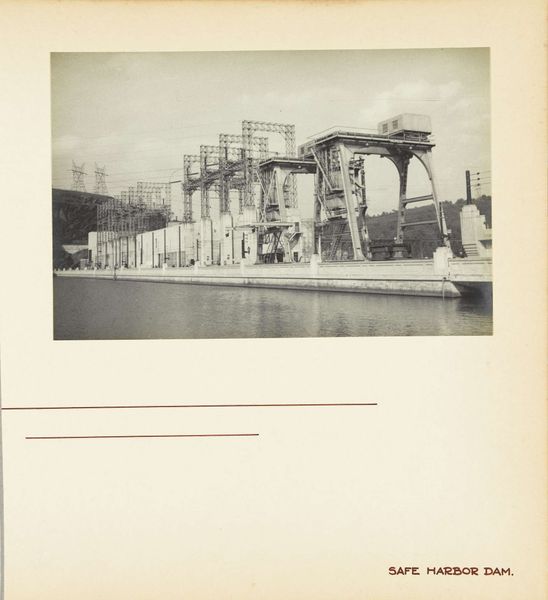
photography
#
street-photography
#
photography
#
cityscape
#
modernism
#
realism
Dimensions: height 156 mm, width 224 mm, height 315 mm, width 285 mm
Copyright: Rijks Museum: Open Domain
Curator: This is Wouter Cool’s 1936 photograph, "View in Chicago, United States." Editor: My first impression is the somber stillness. Even with the cars, it's as if time is suspended; a city caught mid-breath in shades of gray. The buildings loom impressively. Curator: Indeed. Cool’s photography during this period captures the intersection of urban life and the Depression-era reality. The image provides a compelling insight into the everyday experience and evolving social fabric in 1930s America. Editor: From a purely compositional view, it’s fascinating how he uses the receding perspective of the road to create a sense of depth. Your eye travels from those cars in the foreground right back into the cityscape. There's a palpable tension between the foreground elements, those blocky vehicles, and the distant highrises. Curator: Consider how the presence of automobiles suggests a narrative of movement and modernity. And note how photography, as a relatively accessible medium at the time, democratized the visual representation of urban life, challenging more established forms of artistic expression. Editor: It’s remarkable how much texture is achieved in this monochrome. The subtle gradations create an almost palpable surface, allowing the buildings to seem almost touchable. The lack of vibrant color forces us to focus on shape and form, amplifying their stark simplicity. Curator: The photograph becomes a documentary artifact, shaped by and also reflecting the historical context of the 1930s and the documentary impulses of artists like Wouter Cool who used their art to explore and record life around them. It is this quality that invites discussion about social commentary. Editor: Absolutely. The balanced asymmetry between the towering architecture on one side of the frame, the negative space on the other creates an equilibrium and makes you pause. It asks the viewer not just to see, but to reflect. Curator: And so, through this lens, we come to examine the dual role art holds – documenting a specific moment in time, while also sparking discussions about social contexts and realities. Editor: And appreciating the artistry that elevates documentary into something far more poignant.
Comments
No comments
Be the first to comment and join the conversation on the ultimate creative platform.
